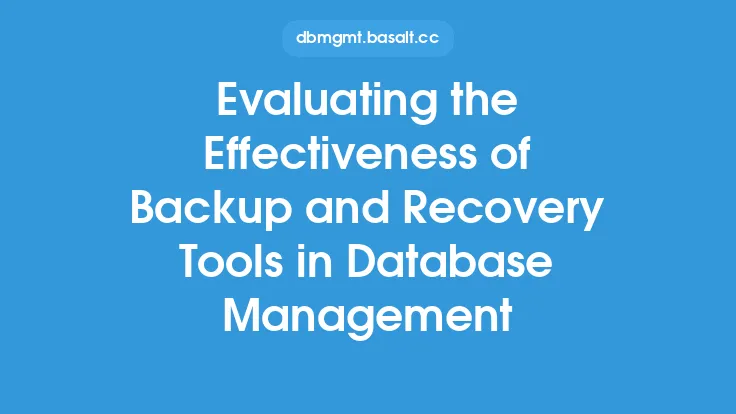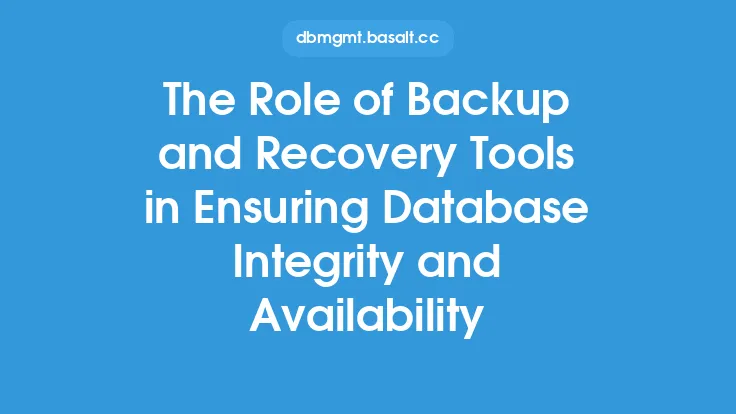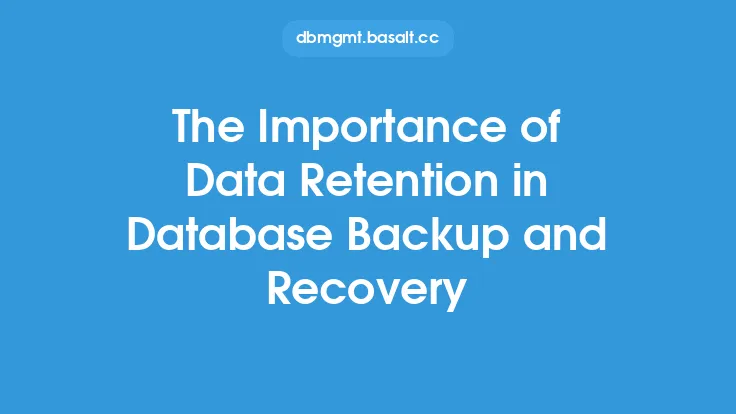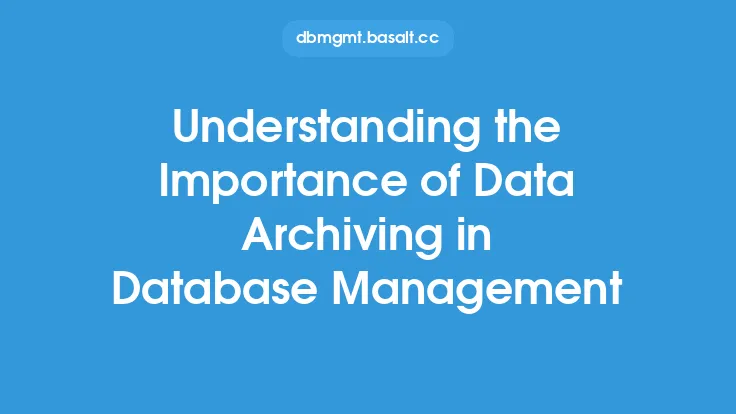In the realm of database management, data is the lifeblood that drives businesses, organizations, and institutions forward. The importance of safeguarding this critical asset cannot be overstated, as the loss or corruption of data can have severe consequences, including financial losses, reputational damage, and even legal repercussions. This is where backup and recovery tools come into play, serving as the first line of defense against data loss and the cornerstone of a robust database management strategy.
Introduction to Backup and Recovery Tools
Backup and recovery tools are specialized software applications designed to protect databases from data loss by creating copies of the data at regular intervals. These tools enable database administrators to restore data to a previous state in the event of a failure, corruption, or other disaster, ensuring business continuity and minimizing downtime. The primary function of backup and recovery tools is to provide a safety net for databases, allowing organizations to recover quickly and efficiently from data-related disasters.
The Importance of Backup and Recovery in Database Management
The significance of backup and recovery tools in database management stems from their ability to mitigate the risks associated with data loss. Data loss can occur due to various reasons, including hardware failures, software bugs, human errors, and malicious attacks. Backup and recovery tools help to alleviate these risks by providing a reliable means of restoring data to a consistent state. This, in turn, ensures that databases remain available and accessible, supporting critical business operations and decision-making processes.
Types of Backup and Recovery Tools
There are several types of backup and recovery tools available, each with its own strengths and weaknesses. These include full backups, incremental backups, differential backups, and transaction log backups. Full backups involve creating a complete copy of the database, while incremental and differential backups capture changes made since the last full backup. Transaction log backups, on the other hand, record all changes made to the database, allowing for point-in-time recovery. The choice of backup and recovery tool depends on the specific needs of the organization, including the size and complexity of the database, as well as the required level of data protection.
Benefits of Using Backup and Recovery Tools
The benefits of using backup and recovery tools are numerous and well-documented. These include improved data protection, reduced downtime, and increased business continuity. By creating regular backups of the database, organizations can ensure that their data is safe and can be restored quickly in the event of a disaster. This, in turn, helps to minimize the impact of data loss on business operations, supporting revenue generation, customer satisfaction, and competitiveness. Additionally, backup and recovery tools can help to reduce the administrative burden associated with database management, freeing up resources for more strategic and value-added activities.
Best Practices for Implementing Backup and Recovery Tools
To maximize the effectiveness of backup and recovery tools, organizations should adhere to best practices for implementation and management. These include developing a comprehensive backup and recovery strategy, testing backup and recovery processes regularly, and monitoring backup and recovery operations closely. It is also essential to choose the right backup and recovery tool for the specific needs of the organization, taking into account factors such as scalability, performance, and compatibility. By following these best practices, organizations can ensure that their backup and recovery tools are working effectively, providing a robust safety net for their databases and supporting business continuity.
Common Challenges and Limitations
Despite the importance of backup and recovery tools, there are several challenges and limitations that organizations may encounter. These include the complexity of backup and recovery operations, the need for significant storage capacity, and the potential for human error. Additionally, backup and recovery tools may not be able to protect against all types of data loss, such as logical corruption or data deletion. To overcome these challenges, organizations should invest in training and education for database administrators, implement automated backup and recovery processes, and regularly test and validate their backup and recovery procedures.
Future Directions and Trends
The landscape of backup and recovery tools is constantly evolving, driven by advances in technology and changing business needs. Some of the key trends and directions in this area include the adoption of cloud-based backup and recovery solutions, the use of artificial intelligence and machine learning to optimize backup and recovery operations, and the increasing importance of data security and compliance. As databases continue to grow in size and complexity, the need for robust and reliable backup and recovery tools will only continue to increase, driving innovation and investment in this critical area of database management.
Conclusion
In conclusion, backup and recovery tools play a vital role in database management, providing a safety net against data loss and supporting business continuity. By understanding the importance of backup and recovery tools, organizations can take proactive steps to protect their critical data assets, minimize downtime, and ensure the availability and accessibility of their databases. As the database management landscape continues to evolve, the need for effective backup and recovery tools will only continue to grow, making them an essential component of any robust database management strategy.





